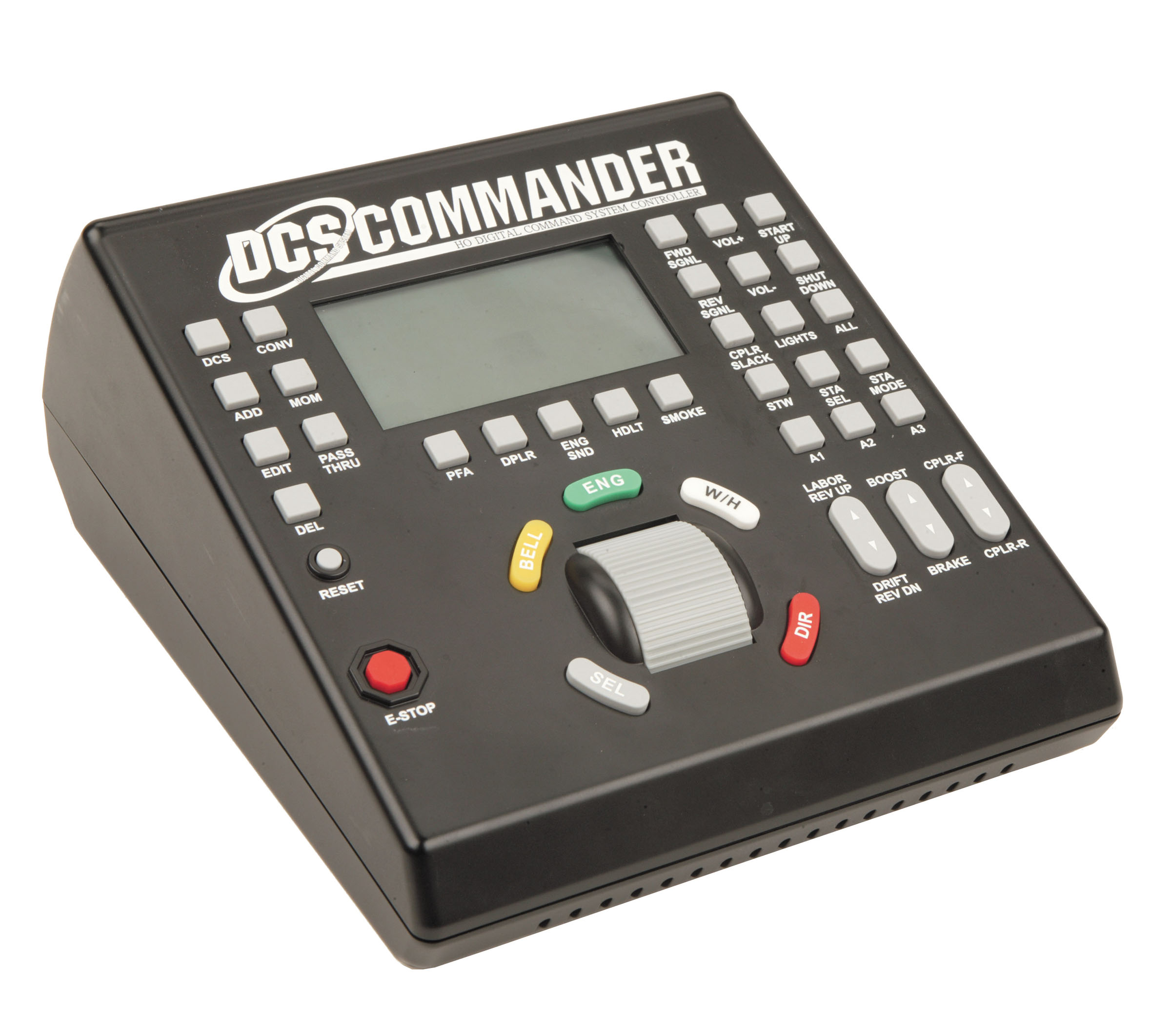Jeff
You said
it's an MRC loco-motion 1500.
It should look like this.

That power pack was near the entry level of MRC's Tech II product line. I had two Tech II 2500's on an HO layout. They were very popular back in the 1980s. Yikes, that was 30 years ago!
I'm somewhat electrically illiterate when it comes to volts and amps so I appreciate the feedback.
No problem. Welcome to the world of modern electric trains. Our trains today can do a lot more than they used to. For best results it helps to have at least a basic understanding of what they do. The Tech IIs were pretty advanced in their day and some of that technology may not work as well with locomotives that now have a lot of technology on board.
To equate volts and amps to water, volts are pressure and amps are volume of flow. Your power pack's voltage (pressure) rating is at 0 amps (no flow). As amps (flow) goes up the peak voltage (pressure) that it can produce goes down.
The 12VA or 12 volts at one amp output available from this power pack is very marginal for O scale trains. In fact, you noted that...
it does get pretty warm if I leave a train running for a while.
...which indicates that you are near the edge of its capabilities already.
Your Weaver chain drive and Atlas F9 locomtives are at least 15 and 40 years old respectively. As you know, other than a motor and a light bulb there is nothing on board to use power so you have been able to get away with using a very HO sized power supply, at least for intermittent operation.
Your Atlas GP15 is mechanically similar to MTH diesels. I assume that it is a plain DC version with no motor control, sound, smoke or command electronics on board. Add those features and you are likely out of the power capabilities of your old HO sized MRC power supply regardless of who manufactured the modern, high feature O scale locomotive.
Your Tech II, which was indeed high tech back in its day, uses pulses of higher voltage at the low end to give better slow speed performance from conventional DC locomotives. Today's dual mode decoders do this on board the locomotive. Providing pulsed DC track power to a locomotive that does this on board might not give the best results.
the control scheme, as Mr Hikel partially explained above, is absolutely unique to them [ as a consequence of being optimized for either "classic Lionel-like" toy train or command control operation, analogue DC operation being almost an afterthought ].
Protosound 3 O scale locomotives are unique in that they operate on conventional AC, conventional DC, DCC command control and the MTH DCS command system. But they are like other locomotives equipped with dual mode sound decoders in that additional features require additional power and that some older technology and current technology may not work well together.
MTH factory 2 rail locomotives run very well on conventional DC as long as it is pure DC of sufficient amperage and voltage. One popular way to get an inexpensive O scale sized DC power supply is to use an O guage AC train set transformer and rectify the output to DC. MTH also makes the DCS commander which, in addition to being a DCS command base, is an excellent conventional DC power pack.

I have used one to run MTH and other O and HO locomotives with very good results. It also has about 8 times the power of your tech II so you would not have to worry about overheating it under continuous operation. 




